Gashadokuro: A Terrifying Nocturnal Ghost Yokai With Voracious Appetite For Human Blood
A. Sutherland - AncientPages.com - Japanese mythology has a rich arsenal of tales, legends, and myths. Among them, some describe unbelievable, supernatural, and malevolent spirits and monsters with the powers of invisibility.
Mitsukuni defying the skeleton spectre invoked by princess Takiyasha. Utagawa Kuniyoshi, 1798 - 1861 - Public Domain
The name of this terrifying Yokai predator varies, and Gashadokuro (“starving skeleton”) is known in Japanese mythology as O-Dokuro, Dokuro-No-Kai, and Mekurabe.
Folklore stories from Japan describe a gigantic creature because it is ten or more meters tall.
Gashadokuro has very specific tactics to attack. He bends over to attack his victims, biting off their heads and letting the blood run over their bodies as much as possible. The creature has a voracious appetite for revenge and enjoys drinking human blood.
These terrifying spirits are thought to be indestructible.
Gashadokuro prefers to hunt and kill under the cover of cloudy and dark nights. Victims of this Yokai usually hear his coming because they hear ringing in their ears, or similar noise, as the creature is said to make a clattering sound with its teeth.
Unfortunately, these people cannot run to safe places; its too late as the Yokai’s ringing is heard only briefly before the creature’s attack. The Gashadokuro cannot be destroyed, and ancient people have always known about it. However, special Shinto charms can ward the monster off and redirect its attention.
There are many centuries-old tales of these huge skeletons. Some describe them as a re-animated combination of many skeletons created from dead people’s bones. According to one version oh his story, he was made of the skulls of people who died on the battlefield.
These skeletons can function without body tissue and muscles.
The only warning for people who encounter the Gashadokuro is to find a safe place to hide as soon as possible and wait out the sunrise. However, this good advice often does not help because the spirit can virtually disassemble itself to hide in different places one would not believe it to be able to fit into.
The Gashadokuro is a mysterious figure with deep roots in ancient folklore, though it is very difficult to find traces leading to these roots.
However, there is one legend that could contribute to all later stories about the evil Gashadokuro. In the 10th century in Kyoto, a powerful samurai (Taira no Masakado) revolted against government forces on the island of Honshu.
His daughter named, Takiyasha-hime experimented with magic and was known to be a sorceress; she could make ghosts appear.
She knew her father was not powerful enough to stand against the government, so she wanted to protect him and their castle.
Image credit: Adobe Stock - Peppeneppe
Using dark magic from a mysterious scroll she possessed, she came in contact with a Gashadokuro that appeared out of a void to charge at Ooya Tarou Mitsukini, the opposing samurai.
Throughout the period since, the evil Gashadokuro apparently continues to terrorize the land, as this legend says.
Will the Gashadokuro predator ever stop hunting its prey? No one knows, but perhaps when his anger is finally released, and it leaves the spirit’s body, the bones collapse, and the Gashadokuro exists no more.
Updated on December 27, 2023
Written by – A. Sutherland - AncientPages.com Senior Staff Writer
Copyright © AncientPages.com All rights reserved. This material may not be published, broadcast, rewritten or redistributed in whole or part without thexpress written permission of AncientPages.com
More From Ancient Pages
-
 Klerksdorp Spheres – Controversial And Out-Of-Place In Time Metallic Spheres From South Africa
Artifacts | Apr 8, 2017
Klerksdorp Spheres – Controversial And Out-Of-Place In Time Metallic Spheres From South Africa
Artifacts | Apr 8, 2017 -
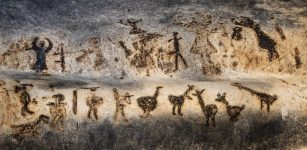 Elusive Non-Binary Gender In Prehistoric Europe – A Forgotten Minority
Archaeology | May 26, 2023
Elusive Non-Binary Gender In Prehistoric Europe – A Forgotten Minority
Archaeology | May 26, 2023 -
 Fortified Bronze Age City Filled With Magnificent Ancient Treasures Solves A Mystery In China
Archaeology | Nov 21, 2023
Fortified Bronze Age City Filled With Magnificent Ancient Treasures Solves A Mystery In China
Archaeology | Nov 21, 2023 -
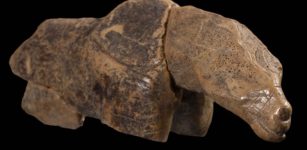 Curious Ice Age Figurine Of Unidentified Animal Species Puzzles Scientists
Archaeology | Jul 31, 2023
Curious Ice Age Figurine Of Unidentified Animal Species Puzzles Scientists
Archaeology | Jul 31, 2023 -
 Ancient Copper Ingots Are Unlocking Iron Age Secrets
Archaeology | Dec 13, 2021
Ancient Copper Ingots Are Unlocking Iron Age Secrets
Archaeology | Dec 13, 2021 -
 Clues To The Mysterious Dog-Headed St. Christopher And His Connection To The Egyptian Jackal God Anubis Found?
Featured Stories | Jan 14, 2025
Clues To The Mysterious Dog-Headed St. Christopher And His Connection To The Egyptian Jackal God Anubis Found?
Featured Stories | Jan 14, 2025 -
 Unexpected Neanderthal Behavior In Spain’s Southern Pyrenees – Revealed
Archaeology | Aug 14, 2024
Unexpected Neanderthal Behavior In Spain’s Southern Pyrenees – Revealed
Archaeology | Aug 14, 2024 -
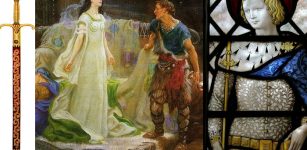 Curtana – Sword Of Mercy Once Belonged To The Anglo-Saxon King Edward The Confessor And Perhaps Even The Arthurian Hero Tristan
Artifacts | Jul 16, 2017
Curtana – Sword Of Mercy Once Belonged To The Anglo-Saxon King Edward The Confessor And Perhaps Even The Arthurian Hero Tristan
Artifacts | Jul 16, 2017 -
 Ancient Secrets Of The Masters Of Mu – Keepers Of Sacred Knowledge – Part 2
Featured Stories | Aug 25, 2018
Ancient Secrets Of The Masters Of Mu – Keepers Of Sacred Knowledge – Part 2
Featured Stories | Aug 25, 2018 -
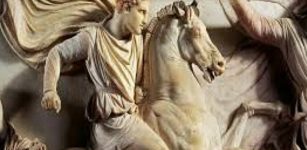 On This Day In History: Alexander The Great Died In Babylon – On June 11, 323 BC
News | Jun 11, 2016
On This Day In History: Alexander The Great Died In Babylon – On June 11, 323 BC
News | Jun 11, 2016 -
 New DNA Evidence Rewrites Ancient History Of Pompeii
DNA | Nov 8, 2024
New DNA Evidence Rewrites Ancient History Of Pompeii
DNA | Nov 8, 2024 -
 Forbidden High-Tech Knowledge Of A Controversial Ancient Lost Super Race
Civilizations | Jun 22, 2018
Forbidden High-Tech Knowledge Of A Controversial Ancient Lost Super Race
Civilizations | Jun 22, 2018 -
 Huge Viking Winter Camp Unearthed In England
Archaeology | May 19, 2017
Huge Viking Winter Camp Unearthed In England
Archaeology | May 19, 2017 -
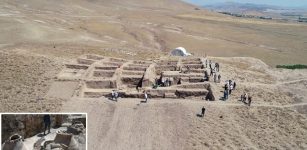 What Are The Monumental Uratrian-Era Structures Unearthed At Garibin Tepe In Van?
Archaeology | Sep 4, 2023
What Are The Monumental Uratrian-Era Structures Unearthed At Garibin Tepe In Van?
Archaeology | Sep 4, 2023 -
 Major Breakthrough: 1.4-Million-Year-Old Bones Discovered In Spain Rewrite History Of Human Evolution In Europe
Archaeology | Sep 29, 2022
Major Breakthrough: 1.4-Million-Year-Old Bones Discovered In Spain Rewrite History Of Human Evolution In Europe
Archaeology | Sep 29, 2022 -
 Castro People: Intriguing Life Of The Female-Dominated Society In Ancient Iberia
Featured Stories | Oct 23, 2024
Castro People: Intriguing Life Of The Female-Dominated Society In Ancient Iberia
Featured Stories | Oct 23, 2024 -
 Bellerophon: Great Hero Of Homer’s Iliad Who Was Punished By Gods For His Pride And Arrogance
Featured Stories | Jul 13, 2021
Bellerophon: Great Hero Of Homer’s Iliad Who Was Punished By Gods For His Pride And Arrogance
Featured Stories | Jul 13, 2021 -
 Huge Ancient Ceramic Workshop With Hundreds Of Stunning Artifacts Solves An Archaeological Mystery In Israel
Archaeology | Dec 14, 2020
Huge Ancient Ceramic Workshop With Hundreds Of Stunning Artifacts Solves An Archaeological Mystery In Israel
Archaeology | Dec 14, 2020 -
 The Hittites – Rise And Fall Of An Ancient Powerful Empire
History | Feb 18, 2019
The Hittites – Rise And Fall Of An Ancient Powerful Empire
History | Feb 18, 2019 -
 Lhasa’s Potala Palace: Greatest Building In Tibet With History Of 1300 Years
Civilizations | Nov 23, 2018
Lhasa’s Potala Palace: Greatest Building In Tibet With History Of 1300 Years
Civilizations | Nov 23, 2018


